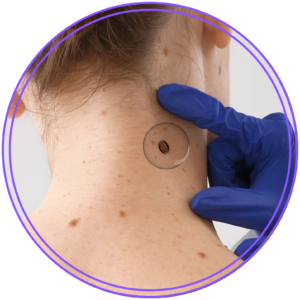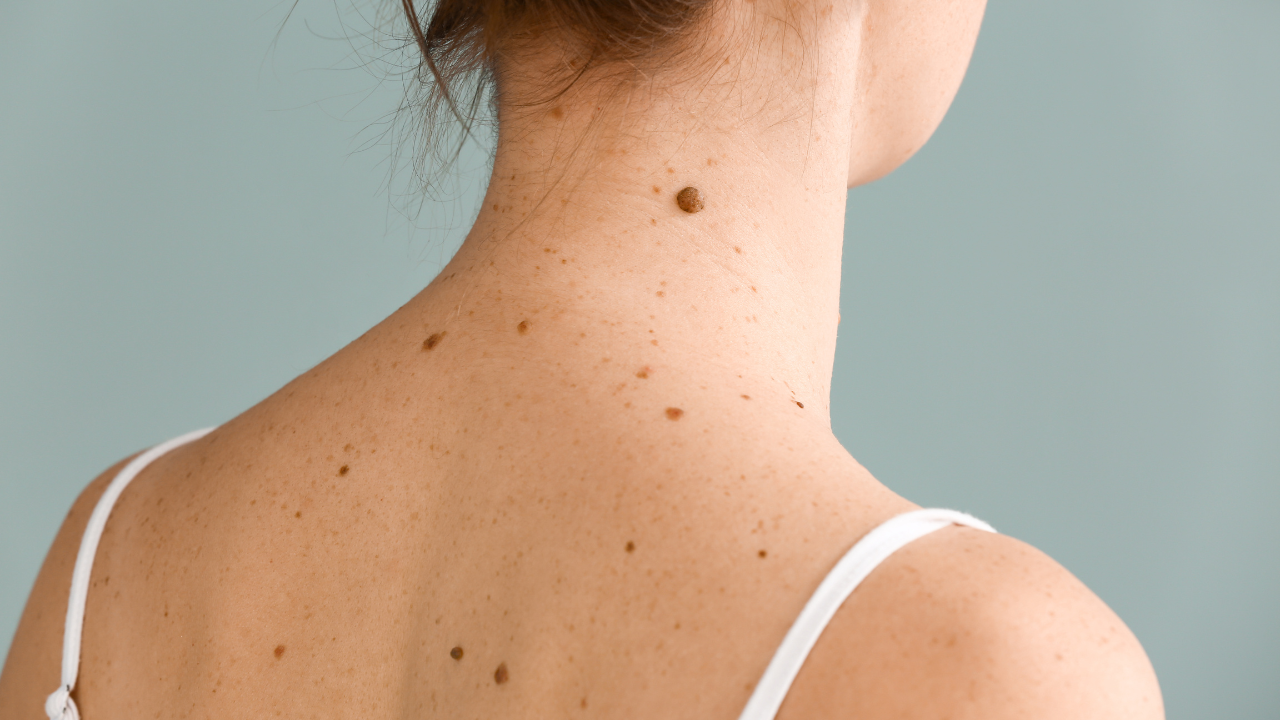Non-Invasive Genetic Sticker
The non-invasive genetic sticker samples spots for the expression (production of) melanoma markers called LINC and PRAME. You can think of these genes as biomarkers for melanoma. When these two genes are positive, 93% of those spots are confirmed as melanoma when a biopsy is performed. An additional genetic test that analyzes another melanoma gene called TERT can be used after the two-gene test to increase testing sensitivity to pick up melanomas.
The non-invasive genetic sticker test has a 99% negative predictive value, which means that if the test is negative, the probability that you don’t have melanoma is 99%. Therefore, if this non-invasive test is negative, you can be reasonably confident that you do not have melanoma and that a biopsy is unnecessary. This can bring peace of mind and allow you to avoid being cut.
How Does the Non-Invasive Genetic Sticker Work?
The genetic sticker is a pain-free adhesive that is applied directly to the area of concern for 10 to 20 seconds. It samples the genetic material shed from the melanocytes that give the spot its color. The sticker gently collects skin cells off the top layer of the skin within minutes, and the sample is then sent to a laboratory that measures the expression of PRAME and LINC. If expression of one or both genes is detected, the test is positive. If no expression is detected, the test is negative.
When is the Non-Invasive Genetic Sticker Helpful?
The test helps determine which spots are high enough risk or suspicious for melanoma that they warrant a biopsy. Specific examples in which it might be useful are:
- If you have a spot that meets one or more of the ABCDE criteria but is not obviously melanoma (as determined by your health care provider)
- If you have a mole in an area that’s difficult to biopsy (eg, your shin) or where the cosmetic effect would be a problem (eg, your face)
- If you have diabetes, poor wound healing, a bleeding disorder, and/or are taking drugs that make you bleed. These conditions would make taking a biopsy difficult
- If you have a personal concern about biopsies (eg, are needle phobic, concerned about scars, or have many moles that need to be evaluated)
However, there are also times when the test cannot be used. Talk to your health care provider to determine if it’s applicable in your case.
How is the Non-Invasive Genetic Sticker Test Performed?
The Figure below illustrates the in-office and telemedicine strategies for using the sticker:
Figure. Process flow for the genetic sticker.

What’s the best approach for using the test? An in-person visit is preferred so the health care provider can directly look at your skin on a regular basis, or to follow up on a suspicious spot. But you can initiate an appointment to evaluate a spot you are concerned about via telemedicine as well. Whether in-person or online, it is critical to share any skin concerns with a clinician. Talking with your provider and getting tested is always beneficial, since a negative test will help ease any worry about potential melanoma and a positive test will aid in catching the melanoma early.
How Much Does the Non-Invasive Genetic Sticker Cost?
Steps have been taken to make sure the cost of the test is not a barrier. More often than not, patients pay $75 or less out of pocket for the non-invasive genetic sticker. If you have commercial insurance, a claim separate from your doctor’s claim will be submitted to your insurance company. If your insurance company doesn’t cover the entirety, the manufacturer of the test may be able to help you address costs. Additionally, there are other options that can be explored to help cover costs for those who are uninsured. Talk with your health care provider.
A Patient’s Perspective



